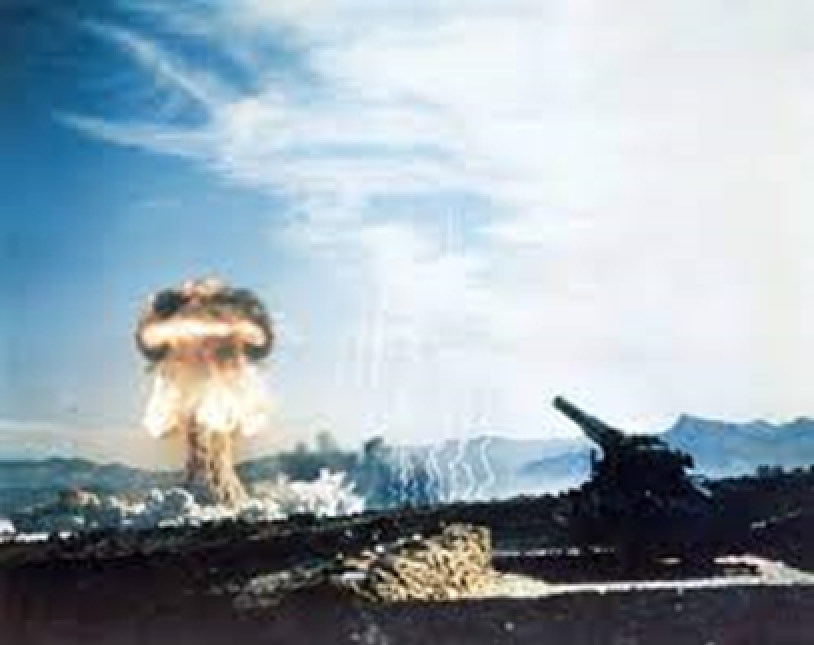Tactical Nuclear Blast.png

Part 2 of 2 Parts (Please read Part 1 first)
(Continuing impact of shock waves)
People will need to shield themselves from thermal and nuclear radiation because they could die if exposed. Obviously, they must find shelter beyond the zone of destruction. They should shelter indoors and in a reinforced bunker or basement, if possible. If they are in a brick or concrete house without a basement, they should find a strong part of the building to shelter in. This could be a small bathroom at ground level or in a laundry room with brick walls.
The incoming shockwave will bounce off internal walls. It will be superimposed on the original wave which doubles the intensity. People should avoid the explosion side of the room and lie down instead of standing or sitting. If there is not a reinforced room, they can lie under a sturdy table or next to a bed or sofa. They should keep away from doors, tall furniture and windows because those will probably be shattered by the shock wave. If the walls of the building collapse, people might be able to survive in a pocket in the rubble. It they are sheltering in an apartment building, they should run to the fire staircase in the structural core of the building. Timber, fiber cement or prefabricated structures probably won’t survive and should be avoided. When the shock wave hits, it is best for people to open their mouths so that their eardrums will be hit with high pressure on both sides and not rupture.
The third stage of the detonation is the fallout which is a cloud of toxic radioactive particles from the bomb. This cloud will be raised by the blast and deposited by the wind, contaminating everything in its path. This will continue for hours or even days after the explosion. In a set of British-Australian nuclear tests, the fallout was clearly preserved in the desert along a half mile track, extending from three miles to fifteen miles. People who do not protect themselves from fallout will not have a long life.
If people are in a stable structure such as a basement or fire staircase, they can shelter in place for a few days if necessary. If their building is destroyed, they should move to the nearest intact structure. All doors, windows and air gaps should be sealed. Water can be obtained from intact pipes and food sealed in cans can be eaten.
If it is necessary for survivors to go outside, they should wear any personal protective equipment that is available, especially a P2 mask or even a dust mask. Tactical nuclear weapons are designed to destroy infrastructure and kill personnel, but they still allow troop movements under the cover of the explosion. The radiological danger is significant but survivable with the proper protection.
Once people find shelter, they will need to decontaminate. This requires a thorough scrub of the skin, hair and nails, and a change into clean clothing. Of course, any severe burns should be tended first. Hopefully, within a few days of the blast, national authorities should have arrived for rescue and medical treatment.